Palestine in the American Imagination: Religion, Politics and Media
By RAMZY BAROUD
Abstract: A study of the political, religious and cultural factors underlying the pro-Israeli bias apparent in the Western media today, as depicted in the mainstream news and television programmes.
As Palestinians hurriedly buried their loved ones in the Gaza Strip following a deadly Israeli onslaught, which further contributed to Gaza’s worst humanitarian crisis since 1967 [1], US and Israeli celebrities rallied at a Los Angeles benefit concert for the Israeli town of Sderot, located near the border of Gaza. [2] Hollywood movie stars Sylvester Stallone, Jon Voight, Valerie Harper and comedian Larry Miller mingled with Israeli celebrities such as singer Ninet Tayeb and others. Children from the Israeli town of Sderot, which received the lion’s share of homemade Palestinian rockets, were cheerful nonetheless. Song and dance, interrupted occasionally by solemn messages of support delivered via satellite by both Republican and Democratic Presidential candidates, replaced the cries of sirens the images of huddling families in the town’s shelters. It was a bittersweet moment, that of solidarity, a renewal of the vow made too often, that Israel’s plight is that of America, and Israel’s security is an American priority, and, indeed, ‘God loves those who love Israel’.
Welcome to America’s parallel reality on Israel and Palestine, barefaced in its defying of the notions of commonsense, equality and justice, ever-insistent on peeking at the Arab-Israeli conflict from a looking glass manufactured jointly in the church, in the Congress and in the news room, where the world is reduced to characters interacting in a Hollywood-like movie set: good guys, well groomed and often white-skinned vs. bad guys bearing opposite qualities.
One may become accustomed to watching, reading and listening to the chorus of support that America – its politicians, most of its mainstream media and a large conglomerate of its churches and clergies – tirelessly offer Israel. But one must never dismiss such support, as typical, expected or, as some of Israel’s supporters would put it, ‘special’ and ‘historic’. As simplistic and naïve in its articulation as the so-called pro-Israeli sentiment in the United States may be, in actuality, its intricate manifestation of political, religious, and cultural factors are as old, in some way, as the United States itself. To understand these factors, some deconstruction is in order. This article merely aims at shedding light at some of these factors and the history behind them.
Religion Meets Politics – Old and New
“They own the [Holy] land, just the mere land, and that’s all they do own; but it was our folks, our Jews and Christians, that made it holy, and so they haven’t any business to be there defiling it. It’s a shame and we ought not to stand it a minute. We ought to march against them and take it away from them.” — Mark Twain, Tom Sawyer Abroad, 1894.
Americans are commonly accepted for being more religious than their Western counterparts, whether in Canada or in Europe. After all, the American Dream was largely initiated by what is widely interpreted as a religious pilgrimage on board the Mayflower in 1620. The history of colonization of the American continent, of course, goes back to earlier years; nonetheless, it was that particular ‘pilgrimage’, in cultural consciousness, that defined the historic relationship between the immigrants from Europe and the so-called New World. One rather significant omission which often occurs is the recognition of the many nations in the new physical landscape, which in fact existed.
Although the Native Americans’ plight has received a somewhat fair share of deserved analysis, I mean to emphasize here an important component that makes their story most relevant to my argument. Native Americans were dismissed as non-existent, were seen as an obstacle to the harbingers of civilizations, and, when they were recognized as an entity, political or cultural, it was meant merely to juxtapose their backwardness, their irrelevance, their savageness, with the progressiveness, the relevance and the civility of the newcomers.
They too, the immaterial ‘Indians’ may have merely owned the land (although Native Americans didn’t believe in such a concept to start with), but it’s “our folks, our Jews and Christians, that made it holy.” The religious aspect of colonization is significant in the sense that it validates the cruelty of the physical uprooting, the massacring and the dismissal of entire races. “Where a command and a faith are present, in certain historical situations conquest need not be robbery,” Martin Buber wrote once. [3] If God, particularly the American God, justifies such acts, who are we, mere mortals, to defy His will? America was and remains in the minds of some, a Holy Land, with many of its towns bearing the name Salem, just like city of Jerusalem, occupied and illegally annexed by Israel. Such notions as legality and illegality might be relevant to the United Nations (itself rendered irrelevant once by US President George W. Bush himself) [4], but among large circles of American religious institutions, these notions are extraneous to the point of ridicule.
But there is more, of course, to the ‘special relationship’ that justified Israel’s robbery of Palestinian land in an American religious, political and intellectual landscape than their combined search for a holy land and their textual, often selective interpretations of the Old Testament.
In 1879, a scale model of the Holy Land known as the Palestine Park was constructed on Lake Chautauqua, New York by Reverend John Heyl Vincent. J. A. Miller explains, Palestine Park was a “visual aid for the legions of Sunday school teachers who flocked to the Chautauqua Institute to bone up on biblical history and geography.” It was the “first ever example of a theme park, a quintessential American construct.” [5] It featured: “…a life-size Tabernacle built to the specifications given in Exodus, a pyramid, a model of Jerusalem, and a small scale replica of the biblical Holy Land itself – complete with a ten-foot-long Dead Sea, a smaller Sea of Galilee, and markers for important biblical sites – landscaped into the rocky terrain of the shoreline …which serves as the Mediterranean Sea.” [6]
The Chautauqua Institute was established five years before the Park, and “spawned hundreds of ‘assemblies’, throughout America, their popularity lasting until radio and cinema decimated their customer base.” That customer base was not only large, but influential, for it included such luminaries as “Amelia Earhart, Helen Keller, Thomas Edison, George Gershwin and at least nine presidents. Ida Tarbell, famed muckraker of Standard Oil, happily recollected cavorting on Palestine Park’s Mount Hermon as a girl.” [7]
Miller argues, that although there were many smaller precursors on American church grounds, “Palestine Park is the iconic example of what geographer John Kirtland Wright called geopiety, ‘a deep religious devotion to a vision of the Holy Land concocted from a ‘curious mix of romantic imagination, historical rectitude, and attachment to physical space’.” [8] He proceeds, “Geopiety is a particularly Protestant obsession originating in England in the 16th century and culminating in the Balfour Declaration. Long before Herzl revved up the Jewish branch of geopiety, the Archbishop of York pugnaciously encapsulated the concept in 1875: “Our reason for turning to Palestine is that Palestine is our country. I have used that expression before and I refuse to adopt any other”. [9]
While these roots continued to be firmly planted, newer religious phenomena helped contribute to that construct, thus widening the parameters of the Park to include a larger segment of American society, using television as the new and relentless platform. Welcome to the Armageddon-seeking American Evangelicals. While the advocacy for Israel by various evangelical churches is both bizarre – since the ultimate objective of this crowed is the annihilation of most Jews and the conversion of some as prerequisites for the Rapture – and widely acknowledged, their influence on the political culture of America is not equally recognized. Pastor John Hagee, for example, a “televangelist to 99 million viewers and pastor of the 18,000-member Cornerstone Church in San Antonio, Texas, established Christians United for Israel (CUFI) in 2005 following the publication of his book, ‘The Jerusalem Countdown: A Warning to the World.’ Hagee envisions CUFI as the Christian version of the American Israel Public Affairs Committee, the powerful pro-Israel lobby whose political clout has significant influence on US foreign policy in the Middle East.” [10]
Journalist Max Blumenthal took his cameras to the CUFI’s Washington-Israel Summit held in July 2007, in Washington DC. The result was a documentary entitled, “Rapture Ready: The Unauthorized Christians United for Israel Tour.” It opens with a dialogue with former Republican House Majority Leader Tom Delay, who was asked how important is the Second Coming is in his support of Israel. “Obviously, it is what I live for. Really, I hope it comes tomorrow. Obviously, we need to be connected to Israel to enjoy the Second Coming of Christ.” [11]
Robert Weitzel reports, “John Hagee is not without fawning friends in Washington. Presidential hopeful John McCain made a campaign stop at the Summit and admitted to the audience that, ‘It’s very hard trying to do the Lord’s work in the city of Satan . . .’ House Minority Whip Roy Blunt followed McCain to the podium and assured the faithful that ‘This is a mission, this is a vision that I believe is a vision for God’s time.’ Senator Joe Lieberman was there and described Pastor Hagee as an "Ish Elokim," a man of God. Never one to be left out of a well-attended Christian Right convocation, President Bush sent his best wishes, ‘I appreciate CUFI members . . . for your passion and dedication to enhancing the relationship between the United States and Israel. Your efforts set a shining example for others . . .’ [12]
Popular Culture
To examine the relationship between political and religious cultures and the popular culture in America is not an easy task, since the relationship is neither one-way nor linier. However, those preaching their version of God, aspiring to hold on to their political powers, understood well how to communicate their messages to the general public. Pop cultures are hardly shaped by polemics, reason and dialectics but by rather seemingly simple and indirect gestures that overtime ingrain lasting impressions. Combined with an already existing bias regarding Palestine, as disseminated by religious and political institutions, popular culture is constantly bombarded with positive imagery and language depicting Israel, and negative representations of Palestinians.
In popular sitcoms such as Friends, Malcolm in the Middle and others, references are quite often made of Israel. One of Friends’ main characters, Chandler, had an Israeli girl friend, attractive and funny. When it was time to break up, he feared that her fighting skills, obtained during her service in the Israeli army would make such a task too difficult. That image of Israel, and the Israelis, being funny, attractive and fearsome is recurring in American television. Palestinians on the other hand are mentioned, sporadically (outside the evening news), and almost always in a negative light. I was up for a big surprise watching an episode of American Dad, one of the most watched animation programs following the Simpsons. The show comes across as progressive, in a roundabout sort of way. A young boy, one of the show’s main characters, was frustrated by the fact that he couldn’t figure out how to operate a homemade rocket. “If a five year old Palestinian boy can do this, so could I.” In another segment, another reference was made to the “anti-Zionist Aryan brotherhood,” an imaginary group that equates an anti-Zionist affiliation to white supremacy. Many such references are made on American television as well as the big screen. However, I will focus the remaining part of the article on media language and its contribution to the manufacturing of an alternative, convenient reality regarding the Middle East, but Israel and Palestine in particular.
Media Language
In the competitive world of media today, swift and conveniently selective reporting is of prime importance. GoogleNews, for example, claims to scan 4,500 news sources, of which only a few are highlighted as main stories. There are thousands of similar services, all competing to produce a story in the fastest time. Thorough – and thus slower – reporting is relegated and crucial information often appears too little too late.
The corporate media’s depiction of the Gaza story, following Hamas’ election victory in January 2006, and which culminated in the clashes between Fatah and Hamas and the latter’s capture of Gaza in June 2007, was reduced to a few typical headlines, depicting Palestinians as unruly, uncivilized, criminal and unpredictable (thus incapable of being a trustworthy peace partner, as often parroted by Israel.)
The imprisonment of 1.5 million Palestinians in Gaza – where a humanitarian crisis, unemployment and poverty are still underway – should have been depicted first and foremost as a humanitarian disaster compelled by an Israeli siege. The dates related to the successive stages of the siege should follow a line of political, not ‘security’ logic. Any reasonable timeline of recent events could easily verify that (the formation of the Hamas government in March 2006, the ousting of the pro-Israeli Palestinian security apparatus in June 2007 and so on being followed by dramatic Israeli moves to tighten the siege on Gaza, Hamas’ stronghold).
But little of that seemed relevant to the way the Gaza story was amply reported. Like the Iraq story, where the two main trusted sources are the occupation and its puppet Iraqi government, any story of relevance to Israel and Palestine has to be validated by the official Israeli source and to a lesser but growing extent by their allies among Palestinians. The rest are ‘extremist’, radical and hell-bent on the destruction of the ‘Jewish state.’ Note how the Jewishness of Israel is often emphasised whenever the word ‘destruction’ or similar words are infused.
This is what Bridget Johnson wrote in the Los Angeles Daily News, chastising the United Nations’ Human Rights Council for its condemnation of Israel’s siege on Gaza: “There was zero mention of Hamas’ continued rocket attacks on Israel — which preceded the cut-off of supplies that has caused such an uproar — or Hamas’ refusal to renounce violence against and attempted destruction of the Jewish state.” [13] The claims were preposterous – especially that of a small group’s ‘attempted destruction’ of a country saturated with nuclear arms. The words ‘destruction’ and ‘Jewish state’ are simply passed as an innocent ‘opinion’, read by millions of Americans. There are many notable omissions as well. Hamas has repeatedly called for a mutual ceasefire, that was also repeatedly rejected or simply ignored by Israel. The siege followed the democratic election of Hamas, not the rocket attacks. Also conveniently missed is the disparity between the numbers of Israelis killed as a result of the Palestinian rockets – 10 in six years of violence – and Palestinians killed by Israeli ‘retaliation’ – over 120 Palestinians in Gaza alone within 9 days, starting February 27. [14] The killing of any civilian anywhere is tragic, but the facts are rarely contextualised by the media. This is only the tip of the iceberg since human suffering cannot only be measured by those who die, but also those who continue to live in perpetual torment. For Johnson, this is irrelevant, since this is not about right and wrong, but a war of language. To win the war, one must have command over language – and the way it’s manipulated – and access to platforms that reach the largest number of readers. An easy recipe to victory in this non-conventional war is an intentional mix of terms as Islamic extremism, al-Qaeda, Hamas, Jewish state, security, existential threats, right to exist, juxtaposed with images or clips of angry Palestinian youth burning Israeli and American flags, ‘side-by-side’, and you will have an American public and government standing in eternal solidarity with Israel.
While most US politicians are self-seeking, power hungry and would do whatever it takes to be elected, the average American, unlike what it may seem, is not born ‘pro-Israel’, and ‘anti-Palestinian.’ Most Americans are pro-the-manufactured, yet misleading images of Israel reach their homes through television, wait at their doorsteps in the morning and confront them through the web. Israel has mastery over the language of the Western media, which, again, helped create a parallel reality that has little correlation to the real world, that of facts, numbers and actual events. That alternative universe only exists on the pages of New York Times, the images of CNN, and the blabber of Fox News ‘experts’. According to that narrative, Palestinians, are irrational, suicidal, demonic, mad, extremists, self hating, and all the rest.
Conclusion
There is no serious, equitable debate regarding Palestine and Israel in the US media, nor any other cultural, political and religious circles. If the existing narrative is to be called a debate, then it’s one with an imagined, not real, language, almost entirely irrelevant to the realities in Palestine and Israel. It’s one that is largely predicated on a narrow minded, apocalyptic religious discourse which for decades has found itself an accepted point of departure for most politicians, even those who falsely pose as liberals. Between the two discourses, that of misguided religious fantasies and pandering politicians, there exists enough room for alternative narratives. Unfortunately, that space is too overwhelmed by cultural misconceptions, institutional bias and deliberate confusion, introduced and instilled deliberately by media producers, pundits and the other manufactures of American popular culture. Until the gatekeepers of pop culture in America are seriously challenged, Palestine will continue to reside in the American imagination as a battle between good and evil, a ‘Holy Land’ that must be wrestled from the hands of those who might have owned the land, at one point, but now, they “haven’t any business to be there defiling it.”
-Ramzy Baroud (www.ramzybaroud.net) is an author and editor of PalestineChronicle.com. His work has been published in many newspapers and journals worldwide. His latest book is The Second Palestinian Intifada: A Chronicle of a People’s Struggle (Pluto Press, London).
(This article was first published in the Palestine Internationalist Journal, Volume 3 Issue 3, Apr 2008 – South Africa)
Bibliography
[1] Gaza humanitarian Crisis ‘Worst Since 1967’, MSNBC. www.msnbc.msn.com/id/23497420/
[2]) U.S., Israeli Stars Rally at L.A. Benefit Concert for Sderot. www.haaretz.com/hasen/spages/959308.html
[3] Martin Buber, On Zion:The History of an Idea, 1974, p. 146
[4] Matthew Rothschild, Bush Trashes the United Nations. The Progressive, April 2003. http://findarticles.com/p/articles/mi_m1295/is_4_67/ai_99818480
[5] J. A Miller, Palestine Park, The Palestine Chronicle, http://palestinechronicle.com/view_article_details.php?id=13390, Jan 8, 2008
[6] Timothy Beal, Roadside Religion, 2005, p. 28
[7] J. A Miller, Palestine Park, The Palestine Chronicle, http://palestinechronicle.com/view_article_details.php?id=13390, Jan 8, 2008
[8] Timothy Beal, Roadside Religion, 2005, p. 28
[9] Issam Nassar, “In Their Image”, Jerusalem Quarterly, October 2003 www.jerusalemquarterly.org/details.php?cat=4&id=185
[10] Robert Weitzel, Children of Palestine and Israel: Cannon Fodder for the Rapture, The Palestine Chronicle, http://palestinechronicle.com/view_article_details.php?id=13592
[11] Ibid
[12] Ibid
[13] Bridget Johnson, The U.N. can learn something from Rambo. The Los Angeles Daily News. www.dailynews.com/columnists/ci_8102360
[14] Aljazeera, Hamas sets terms for Israeli truce. http://english.aljazeera.net/NR/exeres/B09F81FA-14D9-4BCA-A7BD-AF2E52693830.htm; and Amnesty International, Children and civilian bystanders in Gaza death toll: www.amnesty.org/en/news-and-updates/news/children-and-civilian-bystanders-gaza-death-toll-20080303


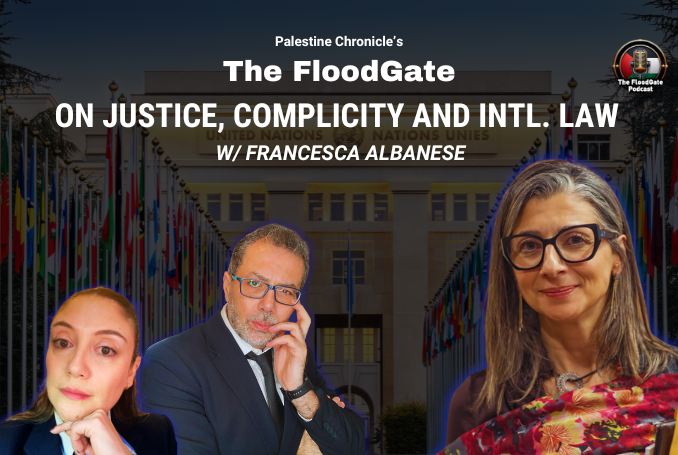










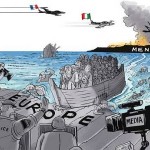

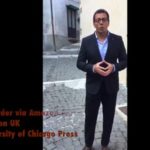


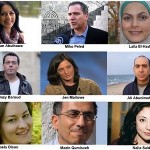
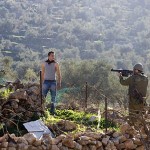




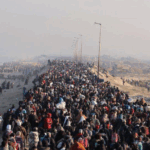

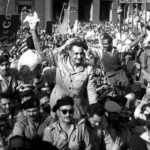
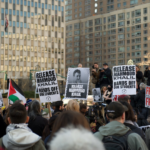



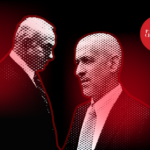

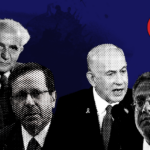
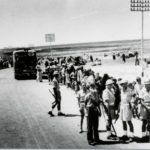

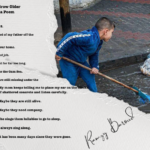



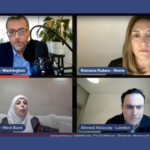

0 Comments